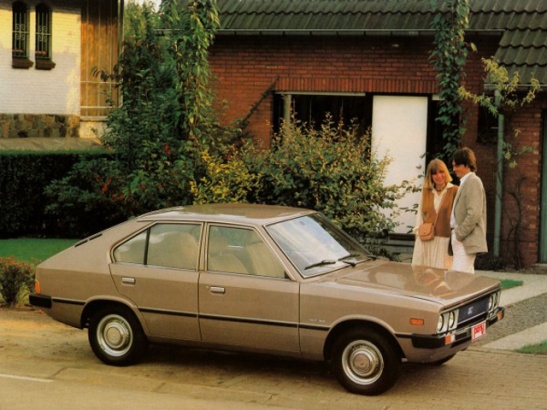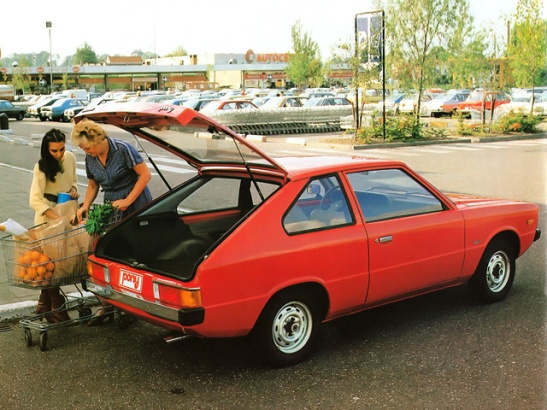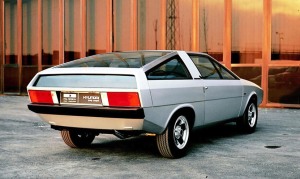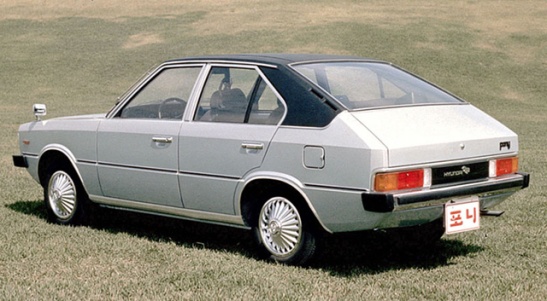1975-1982 Hyundai Pony: An Almost Cinderella Story

1975 Hyundai Pony GLS
Korea’s auto industry reads like a Cinderella story. After the Korean war, a battered South Korean was content with trying to copy decommissioned jeeps from U.S. Army surplus. Gradually the nation as a whole would develop an industrial infrastructure capable of supporting its own auto industry, but not before small regional products would emerge.
One of the early fruits of a national auto industry was the Hyundai Pony, the first widely sold, mass-produced car in Korea. It would later go on to become Korea’s first export, although that chapter in Hyundai history had its rough edges. Hyundai had been building versions of Ford cars for a few years, learning more about the process before making those all important first steps on its own.
To start the process of building its first “real” car, Hyundai did what it knew best: hire foreigners to get things rolling. For Hyundai, it meant hiring a group of ex British Leyland engineers and executives for its homegrown effort. While the Pony would be a simple car, it would be designed by Giorgetto Giugiaro of Italdesign, not usually known for pinning humble cars.

1979 Hyundai Pony 3 Door
Its relationship to the Morris Marina aside, The Pony looked good on paper. Like Cinderella, it would make do with hand-me-downs from others, mainly Mitsubishi and its old schoolmaster Ford. It was truly a collaborative effort in that the English, Italian and Japanese influences converged on what would be a car with no real Korean design input to speak of. The mix under the skin was just as complicated with Mitsubishi engine and transmissions working with parts from the Ford Cortina.
What came out of the Uslan factory was a small 5 door sedan that was later joined by a wagon, pickup truck and finally a rather sporty looking two door hatchback. From the Pony other cars would emerge, but the original first generation Pony was something of a small source of national pride for South Koreans.
The inline four-cylinder engines ranged in displacement from 1.2 to 1.6 liters and featured an overhead cam. They never produced any more than 76 hp. Top speed of a typical late ’70s 1.4L GLS (70 hp) was just under 100 mph and the 15 second time to 60 from took some planning in advance to merge with traffic. The Pony was of course not about going fast, but being practical.
While the two door hatchback looked the part of a fun to drive car, all the Ponies regardless of their configurations handled about the same. Like the Chevette, rear wheel drive was never exploited for its performance potential and made the Pony an odd holdout in a time when front wheel drive was becoming all the rage. Front disc and rear drums were standard as was a five speed manual or optional three speed automatic. Other options like air conditioning would come in time.

1982 Hyundai Pony Pick Up
By the end of the ’70s, the Pony had become quite the big hit in its home market. The next generation would go on to be sold outside of Korea, with a version called the Excel being sold in America. While expectations were always low from the foreign press, in Korea most were satisfied with the Ponys ability to carry out its mission of cheap and simple transportation. Hyundai had been ambitious from the beginning, gradually improving quality with each model year in hopes to going to the big ball that was the global market.

1974 Hyundai Pony Coupe Concept
Evidence of Hyundai’s global aspirations could be seen in its debut choice: the 1974 Turin Motor Show. One year after that, Ponys were sold in Korea. In less than 10 years after that, Ponys were galloping in places as far away as Argentina and the Netherlands. Hyundai’s ambitions were displayed in 1974 when it commissioned Italdesign to create a futuristic coupe concept of the Pony that was reminiscent of the Lamborghini Urraco. Had it been produced, Hyundai’s image would have certainly changed by the time they entered parts of the European market in 1978.
By the end of the ’70s, the Pony had become quite the big hit in its home market. The next generation would go on to be sold aggressively outside of Korea, with a version called the Excel finding its way America. While the early years for Hyundai were rough if not down right laughable, no ones laughing now (except Hyundai shareholders). The Accent, the spiritual successor to the Pony is as refined as any car in the entry-level price range. After years of copying, Hyundai has finally establish a design language all its own. Admission to the ball has its benefits.

1976 Hyundai Pony GLS

I think the Pony was based on the RWD Ford Esort, the larger Stella? was based on the Cortina platform. Neither were sold in the US but were popular in Canada. I saw many of both in the early ’80s while visiting in Maine in the summers.
I always thought it was developed with some input from former Ford of Europe people, but never based on any Ford product. It did have plenty of Mitsubishi parts though. Although homely, I’ve always liked this car.
The early model, with the BMC products, definitely looked better from the rear than the front.
I took many rides in Liquid Propane fueled Hyundai Pony taxis in South Korea in the early 1980s.